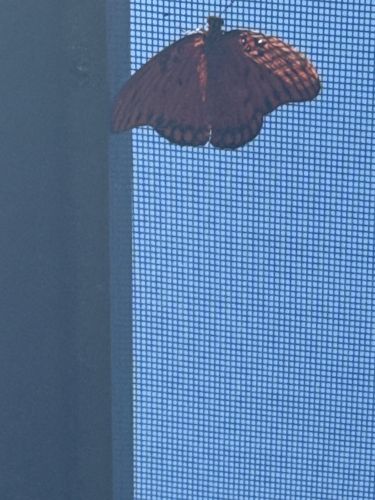Julia
Scientific Name: Dryas iulia
Order & Family: Lepidoptera (butterflies and moths), Nymphalidae (brush-footed butterflies)
Size: Wingspan typically ranges from 7 to 9 cm (2.8 to 3.5 inches).

Natural Habitat
Tropical and subtropical forests, open woodlands, gardens, and disturbed areas. Often found in sunny clearings.
Diet & Feeding
Adults primarily feed on nectar from various flowers. Caterpillars feed on leaves of passionflower vines (Passiflora species).
Behavior Patterns
The Julia butterfly is a fast-flying and active species, often seen darting through sunny areas. Males are known to patrol for females. They are diurnal (active during the day). Females lay eggs singly on passionflower host plants. The caterpillars are spiny and often red-brown with yellow stripes.
Risks & Benefits
Generally beneficial as pollinators, contributing to plant reproduction. Their caterpillars can defoliate passionflower vines, but usually not to a damaging extent to human interests. They are not considered pests and pose no risk to humans.
Identified on: 9/27/2025